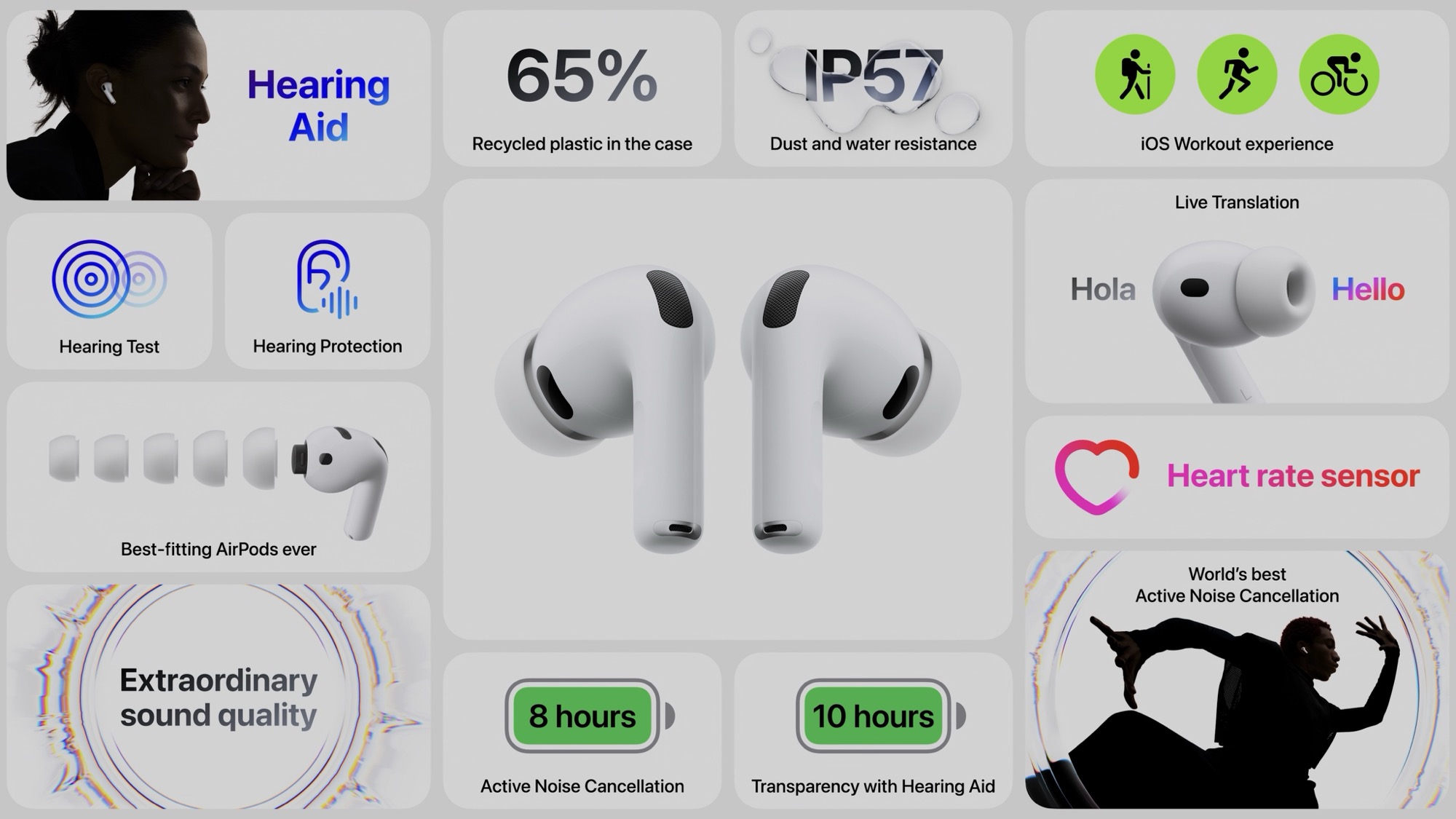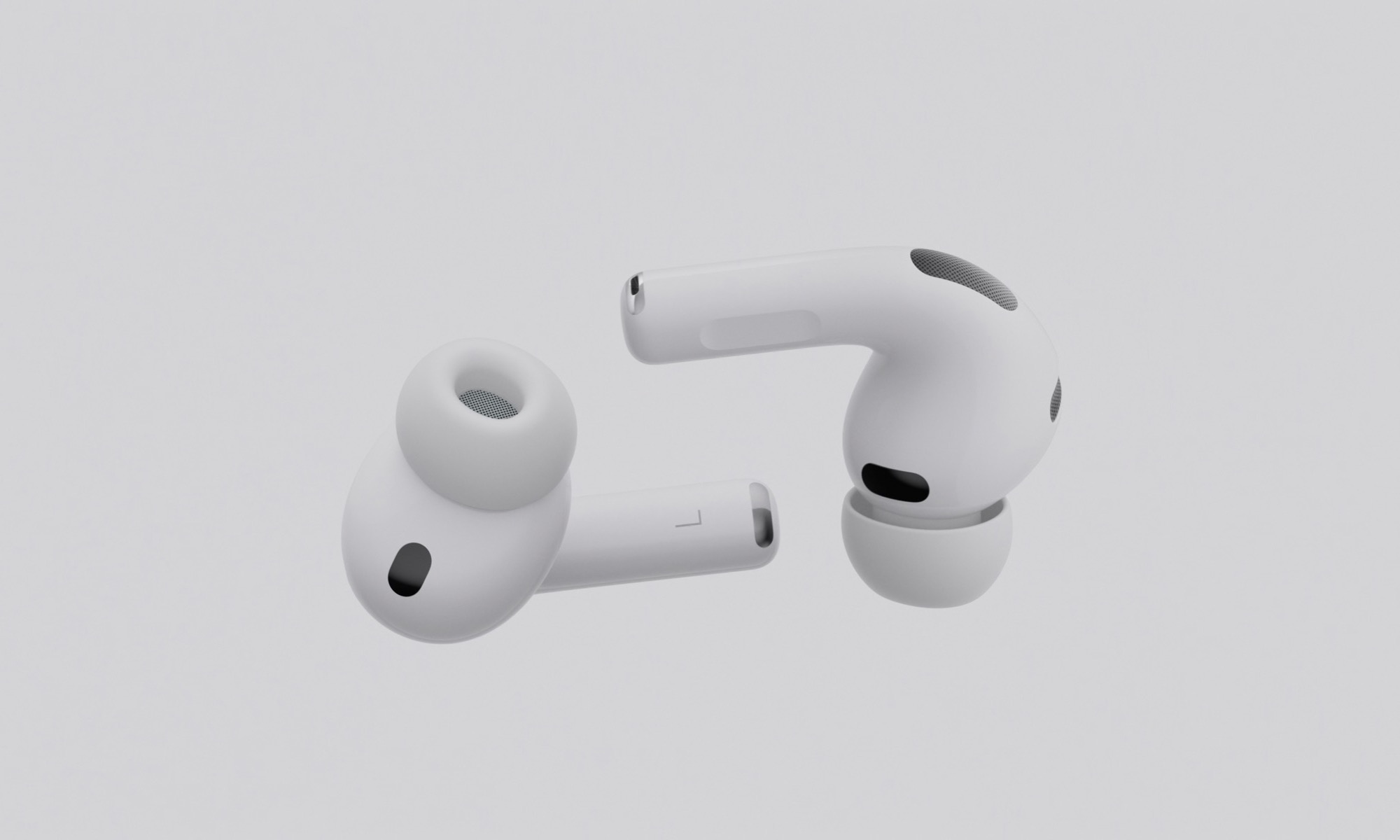Are the AirPods Pro 3 Waterproof?

Toggle Dark Mode
While tentpole features like Live Translation and built-in heart rate sensors grabbed most of the attention during this week’s AirPods Pro 3 announcement, Apple had another important upgrade hiding in the new AirPod Pro 3: a significant improvement to their water resistance with a new IP57 rating.
While this doesn’t technically make the AirPods Pro 3 waterproof, it does mean they’re far more likely to survive a dunk than their predecessors, or nearly any other set of wireless earbuds on the market.
It’s much more challenging to make a set of earbuds waterproof than it is for devices like iPhones, which have carried a higher IP68 rating for years. After all, the sound has to come out somewhere, and modern ones like AirPods also have multiple microphones for picking up your voice and managing features like active noise cancellation. That’s a lot of places for water and dust to get inside.
Until last year, Apple’s AirPods had only an IPX4 rating. That’s still on par with most other true wireless earbuds, such as Sony’s WF-1000XM5 and Bose’s QC Ultra Earbuds. Even the new Powerbeats Pro 2, which were released in February as workout earbuds, are still only IPX4. This means they’re only resistant to water splashes (the “4”), but have no official dust resistance rating (the “X”).
It’s fair to say this is considered the standard rating common to even premium wireless earbuds. That’s fair, as these are more about resisting sweat and light rain than taking them swimming (which we still don’t recommend).
Apple upped that rating for the first time last fall when the AirPods 4 came out with an IP54 rating. The AirPods Pro 2, which were re-released with a USB-C case at the same time, also went from an IPX4 to an IP54 for the new version, although it’s never been clear if the earbuds themselves were redesigned or if the rating was primarily about the new case with a shored-up USB-C port. The water resistance didn’t change, but the “5” instead of the “X” indicated that they’d been tested and certified for protection against dust and other small particles getting inside.
However, this year Apple has taken that rating to new heights with the AirPods Pro 3, which not only offer the same dust resistance, but takes the water-resistance up to 7, which protects them against full immersion.
To put this in perspective, while some newer earbuds have adopted IP54 ratings, such as Google’s Pixel Buds Pro, the Nothing Ear, and JLB Live Pro, it’s much less common to see a full IP57 rating. Samsung’s flagship Galaxy Buds3 Pro have an IPX7 rating, which provides the same level of water resistance as Apple’s AirPods Pro 3, but does not guarantee dust resistance. You’d have to look to other brands, like the Jabra Elite 10, to reach IP57, or the Jabra Elite 8 Active, which boast an impressive and almost unheard-of IP68 rating.
Still, as impressive as I found the durability of the Jabra Elite 8 Active when I reviewed them a couple of years ago — they also have military-standard drop protection — it’s also fair to say that that kind of durability is overkill for most folks. Water resistance is far more important, and for most scenarios, IP57 is pretty good.
What does an IP57 rating mean?
Specifically, IP57 means that, while not completely dust-tight, the AirPods Pro 3 are protected against dust, and can withstand immersion in at least one meter of water for up to 30 minutes.
An IP68 rating doesn’t necessarily add that much more, as it only means that the device exceeds the 1m/30min standard, but how much further it goes is up to the manufacturer. For example, most of Samsung’s phones only offer 1.5 meters for up to 30 minutes, while the iPhone 17 lineup can survive in up to 6 meters of water for the same time.
It’s important to note that water resistance is based on immersion in fresh water. All bets are off if they’re exposed to saltwater, pool water, or water that contains soaps, shampoos, oils, or other chemicals. This means you’ll still want to be careful about getting them wet; an IP57 isn’t an excuse to be careless.
What Should I Do If My AirPods Pro Get Wet?
Even if it’s just a sweaty workout, Apple recommends wiping down your AirPods before putting them back in the case to remove any excess moisture.
You can do this using a soft, dry, lint-free cloth. If you’ve been out in heavy rain or your AirPods have taken a dunk, some moisture may have gotten into the speaker or microphone grilles, in which case you should leave them out of the case for a while to let them dry out. Do not use heat or compressed air to speed up this process.
If the AirPods Pro 3 have been exposed to anything other than fresh water, you’ll want to rinse them off as thoroughly as possible. Salt, chlorine, and things like detergents can damage the water-resistant seals,
Despite the higher IP57 water resistance, it’s best to avoid the temptation to run them under the tap. Apple recommends instead that you wipe them clean with a cloth that’s “slightly dampened with fresh water,” then dry them with another soft, dry, lint-free cloth and let them completely air dry before using them or putting them back in the charging case. Don’t attempt to charge your AirPods or put them in the charging case until you’re sure they’ve fully dried out.










